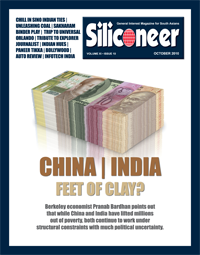|
|
|
ADVERTISEMENTS
|
|
PREMIUM
- HAPPY HOLIDAYS!
- Siliconeer Mobile App - Download Now
- Siliconeer - Multimedia Magazine - email-Subscription
- Avex Funding: Home Loans
- Comcast Xfinity Triple Play Voice - Internet - TV
- AKSHAY PATRA - Bay Area Event - Sat. Dec 6
- Calcoast Mortgage - Home Loans
- New Homes in Silicon Valley: City Ventures - Loden Place - Morgan Hill
- Bombay to Goa Restaurant, Sunnyvale
- Buying, Sellling Real Estate in Fremont, SF Bay Area, CA - Happy Living 4U - Realtor Ashok K. Gupta & Vijay Shah
- Sunnyvale Hindu Temple: December Events
- ARYA Global Cuisine, Cupertino - New Year's Eve Party - Belly Dancing and more
- Bhindi Jewellers - ROLEX
- Dadi Pariwar USA Foundation - Chappan Bhog - Sunnyvale Temple - Nov 16, 2014 - 1 PM
- India Chaat Cuisine, Sunnyvale
- Matrix Insurance Agency: Obamacare - New Healthcare Insurance Policies, Visitors Insurance and more
- New India Bazar: Groceries: Special Sale
- The Chugh Firm - Attorneys and CPAs
- California Temple Schedules
- Christ Church of India - Mela - Bharath to the Bay
- Taste of India - Fremont
- MILAN Indian Cuisine & Milan Sweet Center, Milpitas
- Shiva's Restaurant, Mountain View
- Indian Holiday Options: Vacation in India
- Sakoon Restaurant, Mountain View
- Bombay Garden Restaurants, SF Bay Area
- Law Offices of Mahesh Bajoria - Labor Law
- Sri Venkatesh Bhavan - Pleasanton - South Indian Food
- Alam Accountancy Corporation - Business & Tax Services
- Chaat Paradise, Mountain View & Fremont
- Chaat House, Fremont & Sunnyvale
- Balaji Temple - December Events
- God's Love
- Kids Castle, Newark Fremont: NEW COUPONS
- Pani Puri Company, Santa Clara
- Pandit Parashar (Astrologer)
- Acharya Krishna Kumar Pandey
- Astrologer Mahendra Swamy
- Raj Palace, San Jose: Six Dollars - 10 Samosas
CLASSIFIEDS
MULTIMEDIA VIDEO
|
|
|
|
|
EDITORIAL: Feet of Clay
 In the past few decades, the most profound change in geopolitics has been the stunning change in the global perception of two Asian nations — India and China. Today it is hard to believe that only a few decades ago, while both these countries drew considerable respect and admiration for their ancient culture and rich heritage, Western affluent nations tended to look at both these countries with an attitude which was at best benign condescension but more often outright disdain. In the past few decades, the most profound change in geopolitics has been the stunning change in the global perception of two Asian nations — India and China. Today it is hard to believe that only a few decades ago, while both these countries drew considerable respect and admiration for their ancient culture and rich heritage, Western affluent nations tended to look at both these countries with an attitude which was at best benign condescension but more often outright disdain.
In the hard-boiled calculus of Western global analysts, economic performance was the name of the game— and here both India and China did not have a stellar record.
For India, notwithstanding its vibrant democracy, its economic performance was sluggish, though its achievement in self-sufficiency in foodgrains and considerable technocratic talent pool were no mean achievements.
China’s achievements were substantial too, given the dire circumstances when the Communist Party took power, but the bitter acrimony of the Cold War led Western analysts to cast a jaundiced eye on it, and for all its achievements, it still remained saddled with a huge population of poor.
Then Deng Xiao Ping ushered in a dramatic shift from communist orthodoxy and opened up to foreign companies, and Narasimha Rao brought in dramatic changes where India also dramatically reduced state controls and opened up to foreign corporations.
Both nations have witnessed spectacular economic growth, but the commonly disseminated media narrative, which attributes all the progress to the wonders of the invisible hand of the free market, is a myth, according to internationally renowned development economist Pranab Bardhan. This myth obscures a far more complicated and nuanced reality.
In his book “Awakening Giants, Feet of Clay: Assessing the Economic Rise of China and India,” Bardhan points out that while the two nations have lifted millions out of poverty, both continue to work under structural constraints with much political uncertainty. According to Bardhan, it is imperative to dispel erroneous perceptions to understand what pitfalls India and China face.
The Ayodhya dispute, which has caused so much misery in India, seemingly refuses to go away. The recent Allahabad court order which divides the disputed land into three equal parts has drawn complaints from the Musim Waqf Board, which says it will appeal the ruling in the Indian Supreme Court.
Be that as it may, the broader public response has been mercifully calm and free of any overt violence, a most welcome contrast to the fierce fratricidal communal killings that took place after the demolition of the Babri masjid in 1992.
There is an old saying that you can’t make the same soufflé rise twice. Perhaps the communal madness that seized the nation at that terrible time is a thing of the past. Magsaysay Award-winning activist and Siliconeer India editorial consultant Sandeep Pandey offers an unflinching critique of the purveyors of religious frenzy, who have in the process forced all the real issues—poverty, unemployment, obscene disparity of wealth, corruption—to the back burner. He says it mustn’t be allowed to happen again.
Vijay Tendulkar is arguably one of India’s most celebrated and respected dramatists. The Maharashtrian playright has been the uncrowned king of not just Marathi theatre, but also Indian theatre. He has an uncanny eye and his plays tend to dissect the many foibles, hypocrisies and contradictions of Indian society with unsparing honesty. Sakharam Binder is one of his more well-known and controversial plays.
“Sakharam Binder is perhaps Tendulkar’s most intensely naturalistic play. Its protagonist, Sakharam, a book-binder by profession, who, though a Brahmin by birth, is the total antithesis of the generally accepted conception of a member of that caste,” writes Ravi Bhatnagar in this month’s issue . “Through the delineation of this character, Tendulkar explores the manifestation of physical lust and violence in a human being. Yet he refrains from moralizing or being judgmental, and leaves his viewer or reader to come to her/his own conclusions. He portrays the basic and essential complexity of human nature, which is neither black nor white, but varying shades of grey. Thus, all the characters are a combination of good and evil, weakness and strength.”
Ravi Bhatnagar is the director of the Naatak production of Sakharam Binder. This San Francisco Bay Area-based theatre group is a cultural gem for desi theatre enthusiasts. Thanks to their assiduous and committed efforts, Bay Area desis are uniquely privileged. No one in the rest of North America can watch top quality Indian theatre with superb production values without the hassle of buying a round-trip ticket to the old country.
|
|
|
|
|
 |
Click here to read the Current Issue in PDF Format
COVER STORY
Feet of Clay?
China and India
China and India have made impressive strides, but anticipation of future greatness is based largely on myths created by the media and part of academia, writes Pranab Bardhan.
SUBCONTINENT
Wounds of Ayodhya:
The Challenge
Following the Allahabad Court verdict, the Ayodhya dispute must not again force the real issues — poverty, unemployment, corruption — to take a back seat, writes Sandeep Pandey.
THEATER
Truth Unvarnished:
Sakharam Binder
Vijay Tendulkar’s ‘Sakharam Binder is controversial because it mercilessly skewers Indian moral hypocrisy, writes Ravi Bhatnagar.
ASK THE EXPERTS - Advertorials
New Health Care Law: What's in it for Small Business?
New Health Care Law: What's in it for Seniors?
New Health Care Law: How Does It Help People Without Insurance, Jobs, Papers?
New Health Care Law: How It Impacts Children
OTHER STORIES
EDITORIAL: Feet of Clay
NEWS DIARY: September
COMMUNITY: New Visa Rules
SUBCONTINENT: Coal Block Auction
TRIBUTE: Explorer Journalist: Franz Schurmann (1926-2010)
COMMUNITY: Working Together: National Coordinating Council
SUBCONTINENT: Indo-Chinese Rivalry
LEISURE: Lufthansa: Flavors of India
COMMUNITY: Eid Celebrations
TRAVEL: Universal Resort, Orlando
AUTO REVIEW: 2010 Nissan Altima
ART EXHIBIT: Indian Hues
RECIPE: Paneer Tikka
BOLLYWOOD: Review: Anjaana Anjaani
BOLLYWOOD: Guftugu
TAMIL FILM REVIEW: Drohi
COMMUNITY: News Briefs
INFOTECH INDIA: Tech Briefs
HOROSCOPE: October
ENTERTAINMENT
IIFA Awards 2010: SRI LANKA: JUNE 2010

ENTERTAINMENT
IIFA Awards 2008
A Siliconeer Exclusive Photo Essay

ENTERTAINMENT
81st Annual Academy Awards
A Siliconeer Exclusive Photo Essay

ENTERTAINMENT
IIFA Awards 2008
A Siliconeer Exclusive Photo Essay

|
|